[평화예술칼럼 Peace Art Column] (101) 우다퀀
제주도는 평화의 섬입니다. 항쟁과 학살의 역사를 가지고 있기에 평화를 염원하는 마음은 더욱 간절할 수 밖에 없습니다. 제주4.3이 그렇듯이 비극적 전쟁을 겪은 오키나와, 2.28 이래 40년간 독재체제를 겪어온 타이완도, 우산혁명으로 알려진 홍콩도 예술을 통해 평화를 갈구하는 ‘평화예술’이 역사와 함께 현실 속에 자리 잡고 있습니다. 이들 네 지역 예술가들이 연대해 평화예술운동을 벌이고 있습니다. 이들의 평화예술운동에 대한 창작과 비평, 이론과 실천의 공진화(共進化)도 매우 중요합니다. 독립언론 [제주의소리]가 네 나라 예술가들의 활동을 ‘평화예술칼럼(Peace Art Column)’을 통해 매주 소개합니다. 필자 국적에 따른 언어가 제각각 달라 영어 일어 중국어 번역 원고도 함께 게재합니다. [편집자 글]
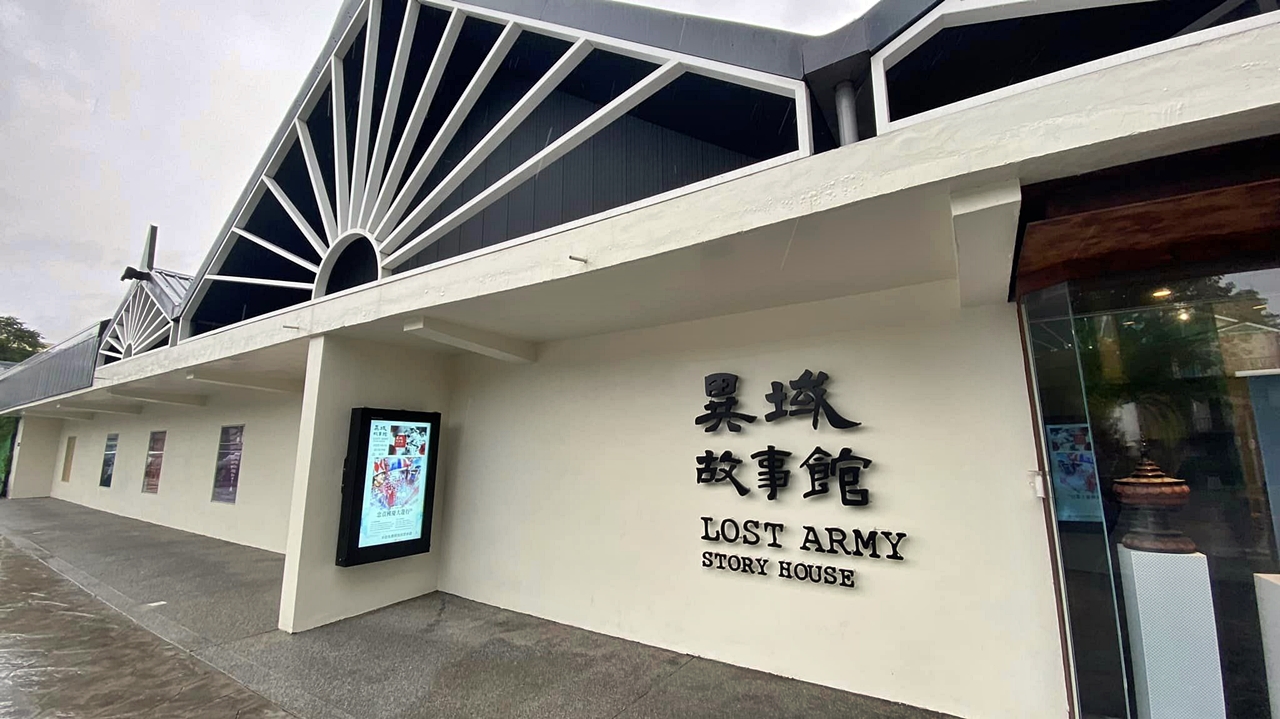
사진=우다퀀
비가 많이 내리는 휴일, 도원시의 평진과 중진의 경계에 있는 ‘이역고사관’과 마조 신촌을 찾았다. 전시를 보는 예술 여행이었지만, 기약 없이 나는 이 알려지지 않은 대시대의 이별 이야기에 빠져들었다.
아시아의 고아들
1949년 중공내전 이후 중국 대륙은 국기를 변경했지만 윈난의 잔당은 계속 중화민국 깃발을 들고 윈난 미얀마(당시 버마) 국경에서 싸웠다. 이들은 윈난 반공 구국군, 윈난 인민 반공의용군, 북타이 고군, 광무부대로 변신해 수만 명이 30년 동안이나 타향지에서 싸웠다. 그러나 수십 년 만에 국제정세는 변화했고, 고군은 유엔총회에서 두 차례에 걸쳐 대만으로의 피난·정주를 요청받았다. 먼저 군인의 가족은 중화민국 정부의 주선으로 타오위안 현 핑진 향 룽강 충정 신촌으로 이주하였다. 이어 태국이나 미얀마에서 대만으로 돌아온 사람들이 타이베이 쌍화지구 일대에 정착했고, 일부는 난투현의 청경농장 인근에서 농업에 종사하게 되었다. 하지만 대만으로 옮기지 않고 현지로 귀화하는 사람이 더 많았고, 대부분은 미얀마 북부 골든 트라이앵글 산중에서 여러 산업에 종사해 뜻밖에도 이 지대의 양귀비 산업 발전에 기여하기까지 했다.

사진=우다퀀
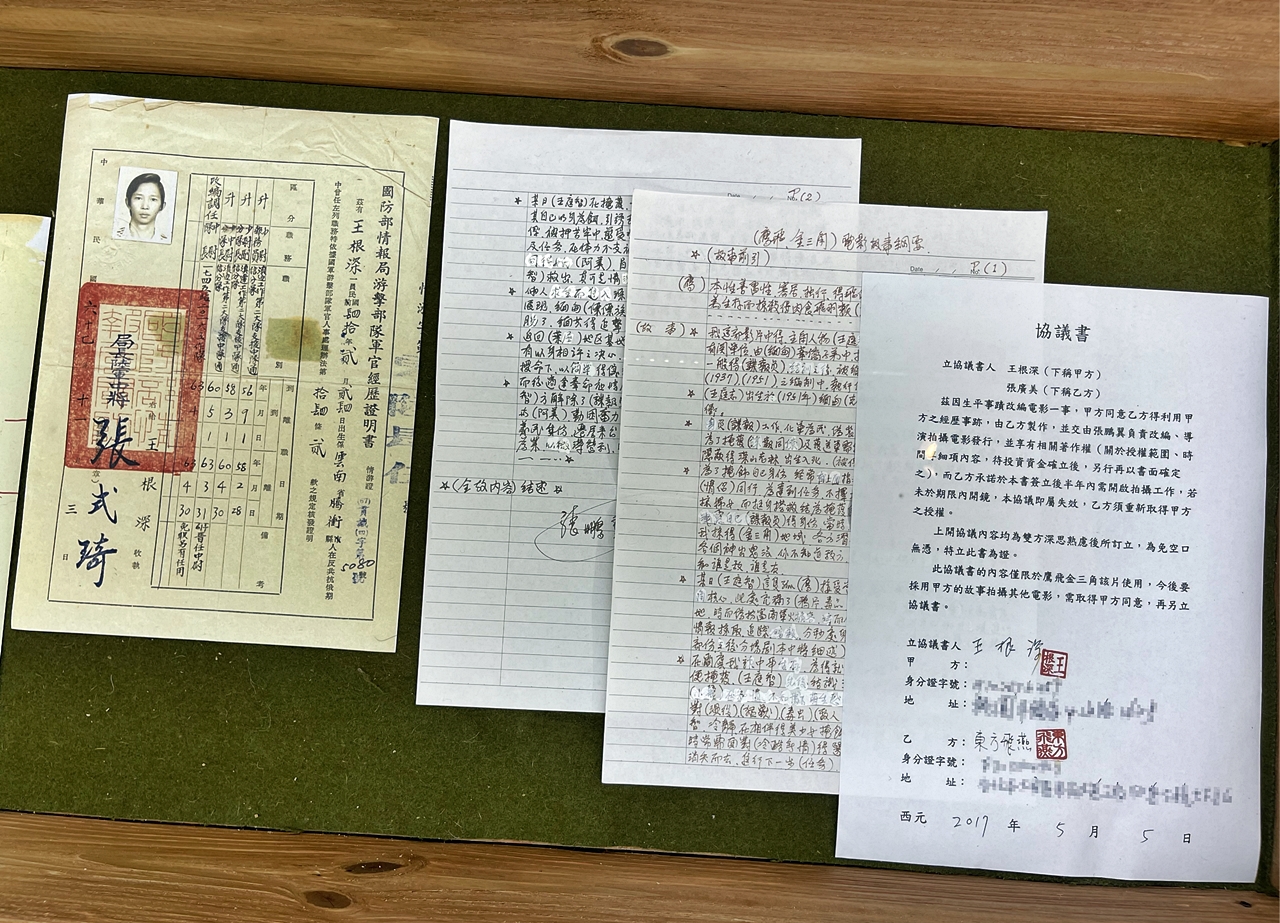
사진=우다퀀
한국전쟁기
1951년 1월 국부는 운남반공구국군을 설립하고 리미(李彌)를 총사령관에 임명했다. 2월 미국의 트루먼은 중공군을 봉쇄하고 당시 한국전쟁 전선에 대한 압력을 줄이기 위해 리미의 윈난 공략을 태국과 함께 비밀리에 지원하는 백지 계획을 승인했다. 중공의 고압적인 태도가 자신의 등에 가시를 찌르게 한 것이다. 리미의 부대는 윈난의 8개 현을 탈환했다. 이 '고군'은 1951년 5월부터 7월까지 본격적으로 윈난에서 반격하여 창원, 섬마, 란창, 쌍강 등 14개 현시를 제압하고 창원에서 윈난인민반공구국군의 국부군 사령부를 설치하였다. 이후 중국인민해방군은 쿤밍, 대리, 초웅에 대규모로 진주하여 압도적인 병력으로 반격을 개시하였고, 고군은 심각한 장비 부족으로 반격하지 못하고 미얀마로 퇴각하였다.
1952년 미국이 지원을 중단하자 리미는 미얀마 각 부족과 적극적으로 동맹을 맺고 동남아 자유인민반공동맹을 창설했다. 1953년 4월 23일 가결된 유엔 총회 결의는 고군의 행동을 비난하며 미얀마로부터의 철수를 요구했다. 5월 22일 방콕에서 '중·미·미얀마·태국' 4국 합동군사위원회가 발족해 철수 조정과 감독을 시작했다.
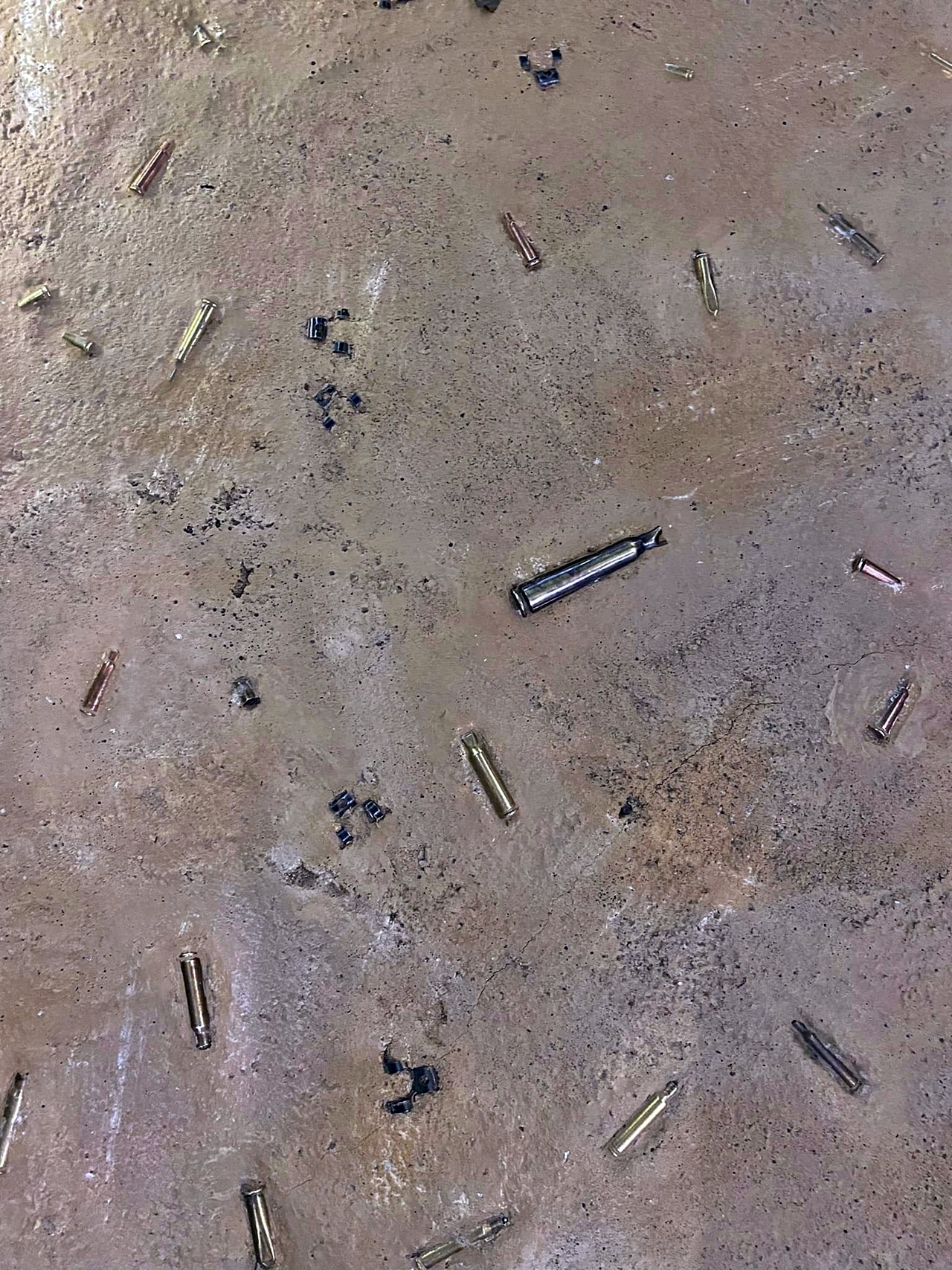
사진=우다퀀

사진=우다퀀
반공 윈난 군사작전은 실패했지만 리미는 대만과 미국 방면에서 많은 도움을 받아 세력 범위를 급속히 확장해 북쪽으로 미치나(Myitkyina), 남쪽으로 치앙마이, 동쪽으로는 라오스 산악지대에 이르렀다. 그 면적은 20만 평방킬로미터, 대만의 약 7배다! 병력도 3만여 명으로 급증했고 대륙과 구정권을 피해 온 옛 국민당 군인에 산적과 깡패들까지 가세했다. 리미는 대만 공수를 용이하게 하기 위해 메콩강 서안의 계곡에 강랍공항을 건설했다. 장경국이 국방회의 부비서장으로 있을 때 리미의 군대를 시찰하기 위해 대만에서 장랍공항으로 몰래 날아오기도 했다.
또 리미는 하사관을 양성하는 반공반러 군사정치대학을 본부에 설치하고 동남아 각지에서 학생을 모집했다. 학생 수는 가장 많을 때는 2000명에 달했다. 나중에 골든트라이앵글로 유명해질 곤사도 1기생 중 한 명이다. 일찍이 리미가 학교를 시찰하고 곤사가 무기 해체에 능한 것을 보고 그 자리에서 소위로 승진시켰다. 이 18, 19세의 젊은이가 장차 골든트라이앵글의 주인이 될 것이라고 리미는 알 길이 없다. 리미의 이 같은 적극적인 관여는 미얀마 정부에 심각한 불안을 안겼다. 국민당 잔당이 본격적으로 활동을 시작하면 골든트라이앵글이 다른 나라가 돼버려 아무도 손을 대지 못하게 되는 것 아니냐는 우려였다. 1953년 3월 미얀마는 두 번째 대규모 포위작전 건기의 폭풍을 시작했다. 골든트라이앵글 사상 최대의 군사행동으로 미얀마는 1만명 이상의 군대를 투입했지만 국민당 잔당은 미얀마군을 격파했다.
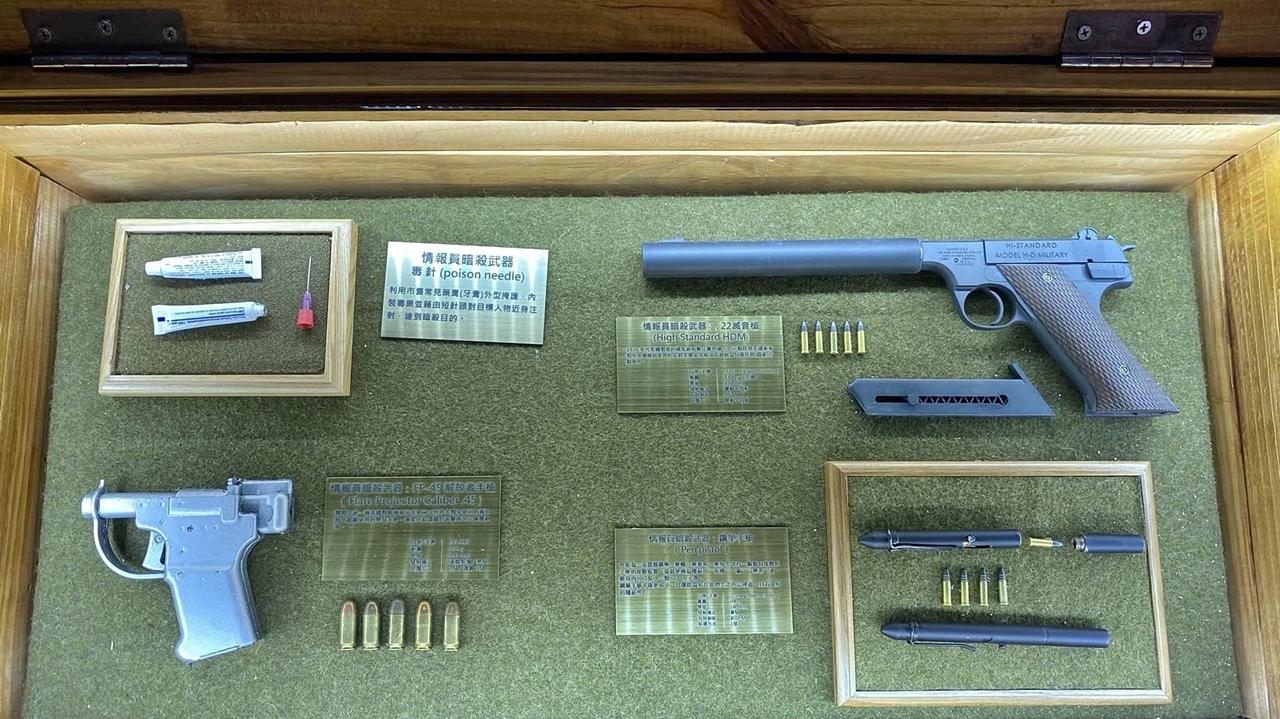
사진=우다퀀

사진=우다퀀
1961년 대만으로 두 번째 철수
미얀마군 패퇴 후에도 대만 피난을 꺼려 미얀마에 머무는 사람은 적지 않게 존재했다. 이들 대부분은 윈난 국적의 장병들로 강랍에 윈난 인민 반공의용군을 설립하고 있었다. 1961년 미얀마는 다시 유엔에 제소했고, 국부는 미국의 압력으로 철군을 결정했다. 같은 해 3월 17일부터 4월 30일까지 장병과 그 가족 4,406명이 대만으로 이송되었다. 국방부는 5월 15일 빨치산 호칭인 윈난인민반공의용군을 취소하라고 명령했다. 이 고군의 2차 철수는 궈레이(國雷)훈련으로 불린다. 철수한 장병과 가족들은 각각 용담 간성 5촌과 가오슝, 병동, 청경의 3개 농장으로 분리되어 오랜 방랑 생활에 종지부를 찍었다.
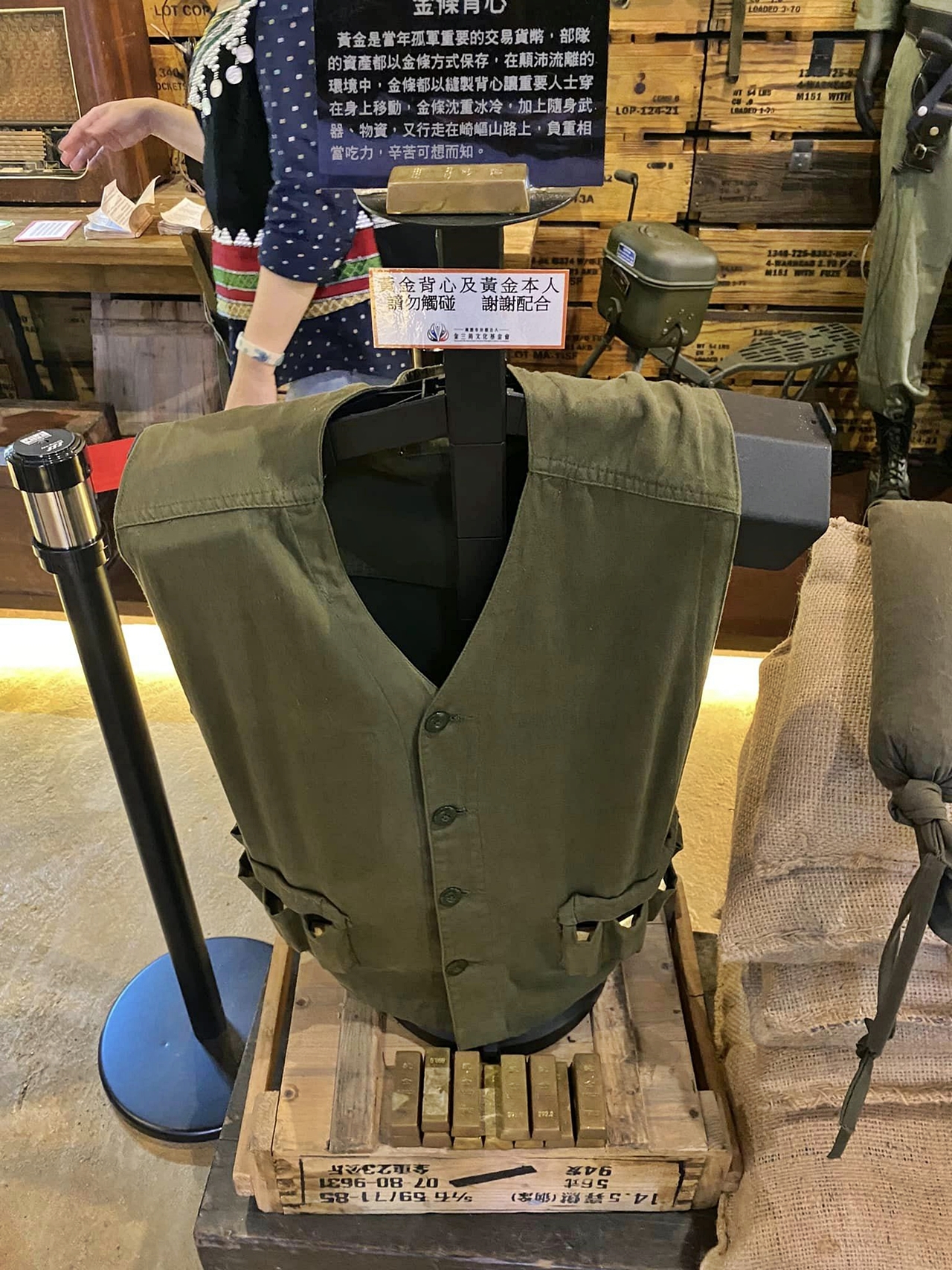
Golden Triangle Extreme vests and gold bars
사진=우다퀀

사진=우다퀀
최후의 고군 1964년
윈난-미얀마 국경지대의 게릴라 부대가 대만으로 2차 철수를 완료해도 3군, 5군, 윈난서부행동대, 윈난남부행동대는 잔류해 윈난성 습격과 공산당군 견제 임무를 수행하며 대만해협을 치안유지에 나섰다. 1964년 제5군 단석문부대는 메이살롱 기지에 주둔했다. 제3군 이문환 부대는 라오스 공산당 베이스캠프를 공격했다. 1968년 제3군과 제5군은 메이살롱에서 합동사령부를 재편하고 대륙에서 6차례 돌격작전을 벌여 100명 이상의 공산당원을 살상했다.
1970년 12월 태국 정부는 치앙라이에 2004 사령부를 설치하고 3군과 5군 합동으로 태국 공산당을 소탕했다. 5년에 걸쳐 태국 공산당군은 완전히 패배했다. 1975년 태국 정부는 이에 기여한 제3군과 제5군 장병 및 그 가족이 태국으로 귀화하는 것을 승인했다.

사진=우다퀀
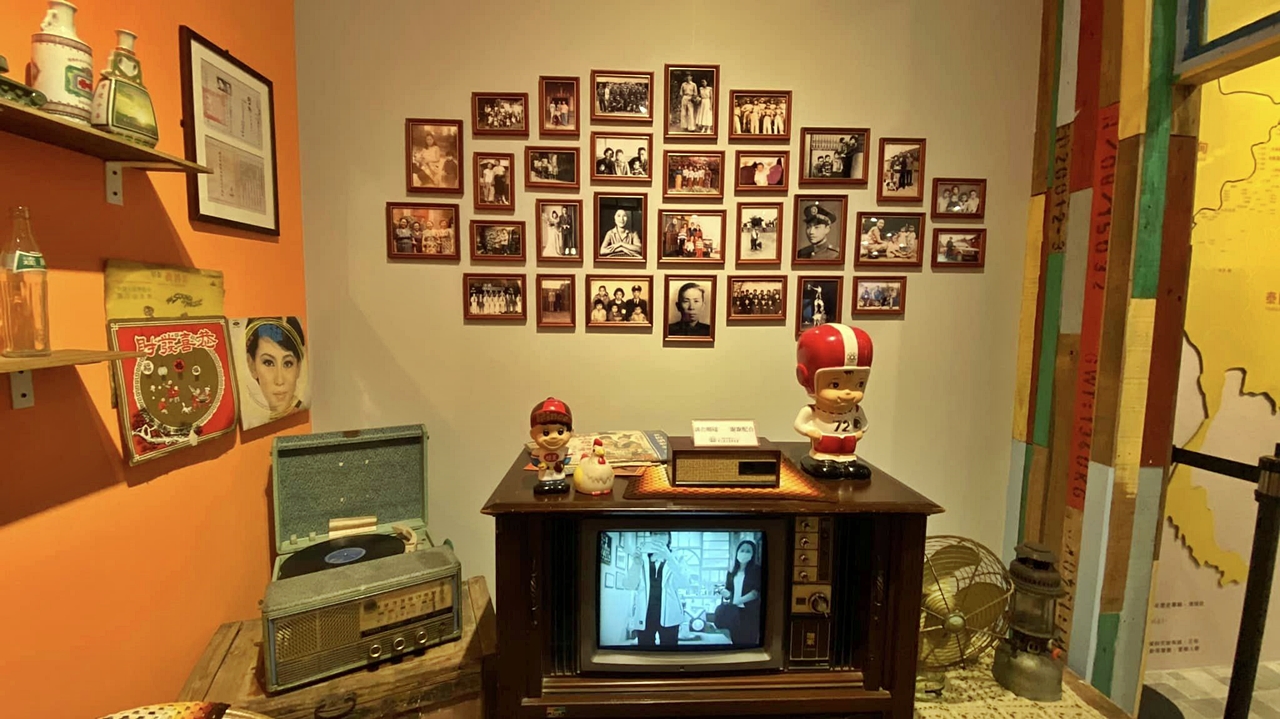
사진=우다퀀
광무부대 1965년
1965년 국방부 정보국은 대륙에서의 첩보활동과 적진에서의 게릴라 전력을 정비하기 위해 당시 국방부 장징궈에게 윈난 쪽에서의 게릴라 전력 재건을 승인받았다. 이후 태국-미얀마 국경의 마항산에 격치만 기지를 건설하여 4개의 공작대대를 두고 광무부대라고 총칭하였다. 광무부대는 미얀마 북부의 각 거점에 주둔하면서 곧바로 중국에 대한 첩보활동을 개시, 단독 또는 제3군, 제5군과 연계해 윈난성 습격작전을 벌였고 특수부대를 윈난성 안으로 깊숙이 침투시켜 게릴라부대를 비밀리에 육성했다. 중국 공산당을 위협하는 한편 미얀마군의 기지를 습격해 중대한 손실을 입혔다. 군사적 좌절을 겪은 미얀마 정부는 분개해 고군의 침략을 유엔에 호소했다. 국제적 압력, 대만의 국방전략이 공세에서 수세로 바뀌면서 태국과 중국 공산당의 수교 제안 등으로 1975년 6월 광무부대는 장징궈 행정원장의 지시로 해체 폐지될 수밖에 없었다. 이렇게 미얀마 국경지대의 국군 마지막 부대가 정식으로 해산됐다.
“잊혀진 일군의 사람들은 싸움에서 죽으면 초목과 함께 썩고, 승리하더라도 천지는 이를 허락하지 않는다!”
작가 백양의 소설 ‘이역(異域)’의 이 구절은 윈난에서 버마, 태국 북부, 라오스에 있던 고군(孤軍)을 그린 것이다. 이 소설은 1990년 같은 제목으로 영화로 만들어졌고 개봉 후 곧바로 대만인들 사이에서 광범위한 논란을 불러일으켰다. 너무나 잔인한 전쟁은 나라가 복구할 수 없을 정도로 잔혹한 기억의 흔적을 지금까지 그들에게 남기고 있다.
‘이역고사관’은 금년 3월 19일에 일반에 공개되었다. 이는 전문 건축가와 멀티미디어 아티스트가 지역 민간재단 및 자원봉사자의 도움을 받아 기획한 것이다. 다큐멘터리, 멀티미디어 전시 등 치밀한 전시플랜을 통해 전쟁의 피에타를 전파하고 가차없는 전화가 초래한 유혈과 고통을 반성하며 인류의 세계평화에 대한 공통된 염원을 추구하고 있다.
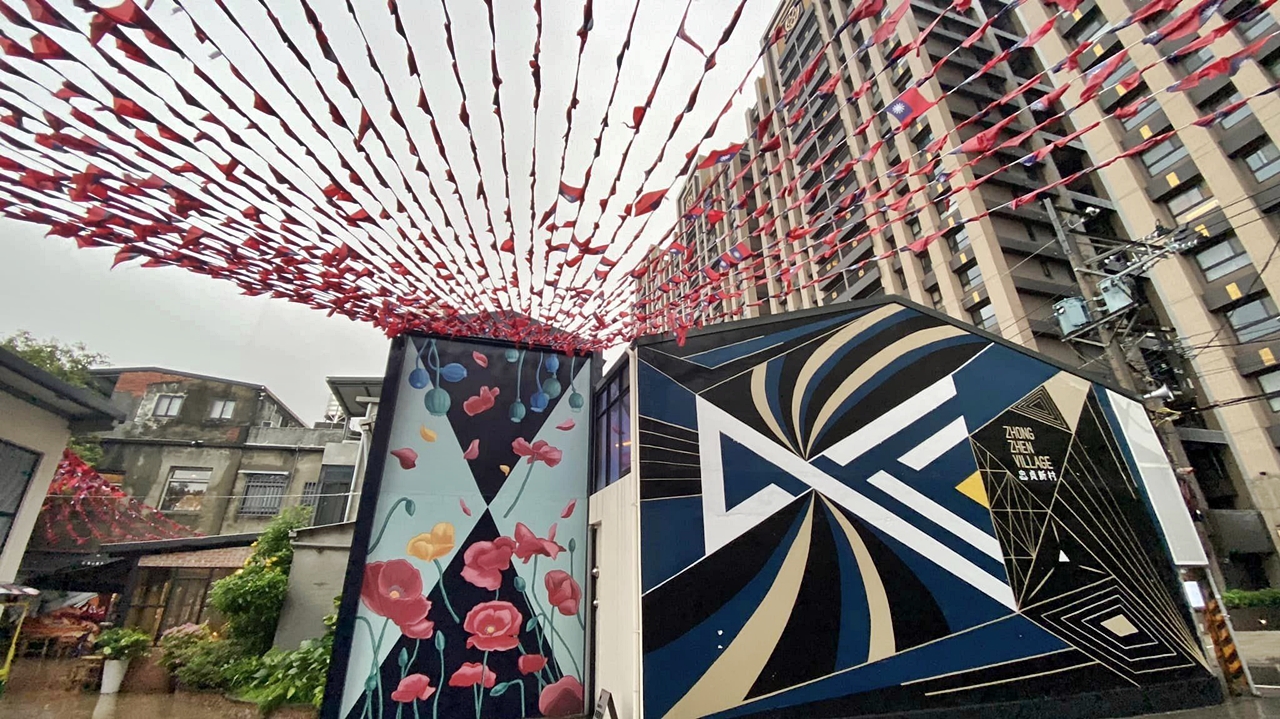
사진=우다퀀

# 우다퀀(吳達坤, WU Darkeun)
타이페이국립미술대학을 졸업한 후 타이페이예술대학 '관두미술관' 큐레이터, 대안공간 'VT ARTSALON' 디렉터, '타이페이국제예술촌' 디렉터 등을 역임했습니다. 현재 타이페이 소재 복합문화공간 'C-LAB(Taiwan Contemporary Culture Lab)' 수석큐레이터로 일하고 있습니다.
亞細亞孤兒的故事:《異域故事館》
滂礡大雨的假日,來到桃園平鎮與中壢交界處的《異域故事館》以及馬祖新村,在展覽與藝文之旅澆灌 下,回朔起這段鮮為人知的大時代顛沛離散故事。
亞細亞的孤兒
1949年國共內戰後中國大陸易幟,雲南一支殘餘部隊繼續轉戰滇緬邊界,堅守中華民國的旗幟。他們先後化身為雲南反攻救國軍、雲南人民反共志願軍、泰北孤軍和光武部隊,有數萬人在異域奮戰達30年之久....。然而數十年下來國際情勢詭譎變化,孤軍在聯合國大會上兩度被要求撤離安置台灣。早期軍眷接受中華民國政府安排安居於桃園平鎮鄉龍岡的忠貞新村;後期歸台的泰緬僑民則多定居於台北的雙和地區一帶,有些軍民被分配置在南投縣清境農場附近農業養殖。卻有更多人留在當地,歸化為當地族群。另大多數滯於緬北金三角山區從事各式各樣產業,甚至意外促成金三角地區罌粟產業的發展。
韓戰時期
1951年1月國府成立「雲南反共救國軍」,任命李彌為總指揮,2月美國杜魯門批准「白紙方案」,與泰國一起秘密支援李彌進攻雲南以牽制中共部隊,化解當時韓戰前線的高張壓力,令中共芒刺在背。李彌部隊曾收復雲南8個縣,這批孤軍曾經於1951年5至7月正式反攻雲南,先攻克滄源、耿馬、後攻下瀾滄、雙江等14個縣市鄉,並且在滄源建立國民政府雲南人民反共救國軍軍事指揮所。爾後中國人民解放軍大舉進駐昆明、大理、楚雄,之後解放軍以絕對優勢兵力進行反攻,李彌部隊因裝備嚴重不足孤軍無力再反攻雲南,退回緬境。
1952年美國停止外援,李彌積極與緬甸各族結盟,成立”東南亞自由人民反共聯軍”,1953年因李彌部隊在緬境活動引發國際爭議,緬甸並向聯合國提出控訴,國府召李彌回台,4月23日聯合國大會全體決議通過,對孤軍滯緬行為予以譴責,要求撤出緬甸。5月22日”中、美、緬、泰” 四國聯合軍事委員會在曼谷成立,開始協調監督撤軍事宜。
“反攻雲南”的軍事行動雖然失敗,但李彌卻得到了台灣和美國方面大量的援助,他的勢力範圍迅速擴展,北到密支那,南抵泰國清邁府,東達寮國山區,面積達20萬平方公里,超過台灣將近7倍之多!隊伍也迅速增至3萬多人,除從大陸逃出來的原國民黨官兵、舊政權人員外,連盤踞山頭的土匪、土司武裝也紛紛前來依附。為了便於台灣空投,李彌在湄公河西岸峽谷中還修建了一座簡易機場——江臘機場。蔣經國在擔任國防會議副秘書長時,也曾從台灣秘密飛到江臘機場,視察過李彌的軍隊。
為了從長計議,李彌還在總部猛撒開辦了一所“反共抗俄軍政大學”,輪訓下級軍官,並在東南亞各地招收學員,學員最多的時候曾達2000人。後來在金三角赫赫有名的坤沙,就是第一期的學員。一次李彌到學校檢閱,見昆沙( Khun Sa )拆卸軍械動作嫻熟,當場提拔他為少尉軍官──李彌絕沒有想到這個當時十八九歲的孩子,以後竟會成為金三角的主人。李彌在金三角大肆招兵買馬以及反攻大陸的種種活動引起緬甸政府嚴重不安。他們擔心國民黨殘軍羽翼豐滿,將金三角變成國中之國,那時候誰也奈何他們不得。1953年3月,緬甸發動了第二次大規模的圍剿「旱季風暴」。這是金三角歷史上最大的軍事行動,緬甸政府軍出動1萬以上的兵力,國民黨殘軍依舊還是打垮了緬甸政府軍。
第二次撤台1961年
滇緬國軍第一次撤台後,仍有少部分不願撤離者留在緬甸境內,這些多半是雲南籍官兵,在江拉成立「雲南人民反共志願軍」。1961年緬甸再度向聯合國提出控訴,國府在美國壓力下決議撤軍。1961年3月17日起至4月30日止,接運官兵、眷屬4406人來台。國防部於5月15日下令撤銷游擊隊番號,「雲南人民反共志願軍」,自此走入歷史。此為孤軍第二次的撤台,史稱國雷演習。撤台官兵、眷屬分別安置於龍潭干城五村和高雄、屏東及清境三個農場,結束了長達多年的漂泊歲月。
末代孤軍1964年
國軍滇緬邊區游擊部隊完成第二次撤台後,仍有前滇緬邊區游擊隊第三、五軍、滇西行動縱隊、滇南行動縱隊留駐滇緬邊區,執行突擊雲南省任務,箝制共軍,維護台海安全。 1964年五軍段希文部隊進駐美斯樂基地。三軍李文煥部隊則配合寮軍突擊寮共大本營。1968年三.五軍於美斯樂重組聯合指揮部,並實施六次突擊大陸任務,共軍死傷百餘人。
1970年12月泰國政府於清萊成立「04」指揮部,協調三、五軍聯合清剿泰共事宜,同月三、五軍集結兵力奮力掃盪泰寮邊境之泰共武力,歷時五年,將泰共基地全數收復,泰共徹底被擊敗潰散,1975年泰國政府批准清剿泰共有功之三、五兩軍官兵及眷屬歸化入泰國籍。
光武部隊1965年
1965年國防部情報局為利執行大陸情報工作,發展敵後游擊武力,報奉時任國防部長的蔣經國先生核准重建滇邊游擊部隊,後於泰緬邊界馬亢山建立格致灣基地,作為指揮部,共設立四個工作大隊,統稱「光武部隊」。「光武部隊」進駐緬北各基地後,立即展開對中國之情報工作,並以自力,或協調三、五軍對滇省實施突擊任務,並派遣特遣小組滲透深入雲南境內,秘密發展游擊武力,使中共備受威脅,共軍一方面唆使緬共,一方面壓迫緬軍,襲擊基地,先後爆發多次戰鬥,緬共、緬軍均遭受重大損失。緬政府在軍事上受挫後,憤而向聯合國控告孤軍侵略。在國際壓力和臺灣國防戰略易攻為守,及泰國和中共擬議建交下,「光武部隊」不得不在蔣經國行政院長指示下予以遣散裁撤,時為1975年6月。至此國軍在滇緬邊區最後一股武力正式裁撤。
「一群被遺忘的人,他們戰死,便與草木同朽;他們戰勝,仍是天地不容!」
當作家柏楊的小說《異域》,寫下這段話描寫著這一群雲南進入緬甸、泰北、寮國的孤軍。1990年這小說也被改變拍攝成為電影《異域》(A Home Too Far)上映後,影片中泰北孤軍奮戰不懈的劇情立刻引起臺灣人的廣泛討論,戰爭的苦痛在這群人身上留下深刻傷痕,戰爭過於殘酷,至今留下無法弭平的殘酷回憶,至今國家也無法彌補他們。
《異域故事館》在今年3月19日對外界開放,在當地私人基金會與志工的力量協助,專業建築師與多媒體藝術家規劃。以紀錄片、多媒體展區等細緻展覽規劃下傳遞止戰之殤,省思戰爭無情烽火帶來的流血與磨難,追求人類世界和平的共同願望。
アジアの孤児の物語-《異域故事館》
激しい雨が降る休日、桃園市の平鎮と中壢の境にある《異域故事館》と馬祖新村を訪ねた。展示を見るアートの旅だったが、期せずして私はこの知られざる大時代の別離の物語に思いをはせた。
アジアの孤児たち
1949年の中共内戦後、中国大陸は国旗を変更したが、雲南の残党は引き続き中華民国の旗を掲げて雲南・ミャンマー(当時はビルマ)国境で戦った。彼らは雲南反攻救国軍、雲南人民反共義勇軍、北タイ孤軍、光武部隊へと変身し、数万人が30年も異郷の地で戦い続けた。しかし数十年で国際情勢は変化し、孤軍は国連総会で2度にわたって台湾への避難・定住を要請された。まず、軍人の家族は中華民国政府の計らいで桃園県平鎮郷龍崗の忠貞新村に移住した。続いてタイやミャンマーから台湾に戻った人々が台北の双和地区一帯に定住し、一部は南投県の清境農場近くで農業に従事することになった。だが、台湾に移らず現地に帰化する人のほうが多く、その大半はミャンマー北部のゴールデントライアングル山中でさまざまな産業に従事し、意外にもこの地帯のケシ産業の発展に寄与さえした。
朝鮮戦争期
1951年1月、国府は「雲南反共救国軍」を設立して李彌を総司令官に任命した。2月、アメリカのトルーマンは、中共軍を封じ込めて当時の朝鮮戦争の前線への圧力を軽減するため、李彌の雲南攻略をタイとともに秘密裏に支援する「白紙計画」を承認した。中共の高圧的な態度が自らの背に棘を突き刺させたのだ。李彌の部隊は雲南の8県を奪還した。この「孤軍」は1951年5月から7月にかけて本格的に雲南で反撃し、滄源、耿馬、瀾滄、双江など14県市を制圧、滄源で雲南人民反共救国軍の国府軍司令部を設置した。その後、中国人民解放軍は昆明、大理、楚雄に大規模に進駐して圧倒的な兵力で反撃を開始し、孤軍は深刻な装備不足のため反攻できずミャンマーに退却した。
1952年にアメリカが支援を打ち切ると、李彌はミャンマー各部族と積極的に同盟を結んで「東南アジア自由人民反共同盟」を創設した。1953年4月23日に可決された国連総会決議は、孤軍の行動を非難してミャンマーからの撤退を要求した。5月22日、バンコクで「中・米・ミャンマー・タイ」4国合同軍事委員会が発足し、撤退の調整と監督を開始した。
「反攻雲南」軍事作戦は失敗したが、李彌は台湾やアメリカ方面から多大な援助を受けて勢力範囲を急速に拡大し、北はミッチーナー、南はチェンマイ、東はラオスの山岳地帯に達した。その面積は20万平方キロメートル、台湾の約7倍だ!兵力も3万人余に急増し、大陸や旧政権から逃れてきた旧国民党の軍人に、山賊やチンピラたちまで加わった。李彌は台湾の空輸を容易にするため、メコン川西岸の渓谷に「江拉空港」を建設した。蒋経国が国防会議副秘書長だった頃、李彌の軍隊を視察するために台湾から江拉空港に密かに飛んできたこともある。
また、李彌は下士官を養成する「反共反露軍事政治大学」を本部に設置し、東南アジア各地から学生を募った。学生数は最も多いときは2000人に達した。後にゴールデントライアングルで有名になる坤沙も第一期生の一人だ。かつて李彌が学校を視察し、坤沙が兵器解体に長けているのを見てその場で少尉に昇進させた。この18、19歳の若者が将来ゴールデントライアングルの主になると、李彌は知る由もない。李彌のこのような積極的な関与はミャンマー政府に深刻な不安を抱かせた。国民党の残党が本格的に活動を始めたら、ゴールデントライアングルが別の国になってしまって誰も手を出せなくなるのではないかとの危惧だった。1953年3月、ミャンマーは2度目の大規模な包囲作戦「乾季の嵐」を開始した。ゴールデントライアングル史上最大の軍事行動で、ミャンマーは1万人以上の軍隊を投入したが、国民党の残党はミャンマー軍を撃破した。
1961年、台湾へ2度目の撤退
ミャンマー軍敗退後も、台湾への避難を嫌がってミャンマーに留まる人は少なからず存在した。その多くは雲南籍の将兵で、江拉に「雲南人民反共義勇軍」を設立していた。1961年ミャンマーは再び国連に提訴し、国府はアメリカの圧力により軍の撤退を決定した。同年3月17日から4月30日までの間に、将兵とその家族4,406人が台湾に移送された。国防部は5月15日、パルチザンの呼称である「雲南人民反共義勇軍」の取り消しを命じた。この孤軍の第2次撤退は国雷演習と呼ばれる。撤退した将兵と家族はそれぞれ龍潭干城5村と高雄、屏東、清境の3つの農場に分置され、長年の放浪生活に終止符を打った。
最後の孤軍 1964年
雲南・ミャンマー国境地帯のゲリラ部隊が台湾への第2次撤退を完了しても、第3軍、第5軍、雲南西部行動隊、雲南南部行動隊は残留し、雲南省襲撃や共産党軍牽制の任務を遂行して台湾海峡の治安維持にあたった。1964年、第5軍の段錫文部隊はメーサロン基地に駐屯した。第3軍の李文煥部隊はラオス共産党のベースキャンプを攻撃した。1968年、第3軍と第5軍はメーサロンで合同司令部を再編し、大陸で6回の突撃作戦を行って100人以上の共産党員を殺傷した。
1970年12月、タイ政府はチェンライに「04」司令部を設置し、第3軍と第5軍合同でタイ共産党を掃討した。5年かけてタイ共産党軍は完全に敗北した。1975年、タイ政府はこれに貢献した第3軍と第5軍の将兵およびその家族がタイに帰化することを承認した。
光武部隊1965年
1965年、国防部情報局は、大陸での諜報活動や敵陣でのゲリラ戦力を整備するため、当時の国防部長・蒋経国に雲南側でのゲリラ戦力再建の承認を得た。その後、タイ・ミャンマー国境の馬亢山に格致湾基地を建設して四つの工作大隊を置き、「光武部隊」と総称した。光武部隊はミャンマー北部の各拠点に駐屯し、直ちに中国に対する諜報活動を開始、単独または第3軍、第5軍と連携して雲南省襲撃作戦を行い、特殊部隊を雲南省内に深く侵入させてゲリラ部隊を秘密裏に育成した。中国共産党を脅かす一方で、ミャンマー軍の基地を襲撃し重大な損失を与えた。軍事的な挫折を味わったミャンマー政府は憤慨して孤軍による侵略を国連に訴えた。国際的圧力、台湾の国防戦略が攻勢から守勢に変わったこと、タイと中国共産党の国交樹立提案などにより、1975年6月、光武部隊は蒋経国行政院長の指示で解体廃止を余儀なくされた。こうしてミャンマー国境地帯の国軍最後の部隊が正式に解散した。
「忘れられた一群の者は、戦に死ねば草木と共に朽ち、勝利しても天地はこれを許さない!」
作家・柏楊の小説《異域》のこの一節は、雲南からビルマ、タイ北部、ラオスにいた孤軍を描いたものだ。この小説は1990年に同じタイトルで映画化され、公開後はたちまち台湾人の間で広範な議論を呼び起こした。あまりに残忍な戦争は、国が修復できないほど残酷な記憶の痕跡を今に至るまで彼らに残している。
《異域故事館》は今年3月19日に一般公開された。これは、プロの建築家とマルチメディアアーティストが、地元の民間財団やボランティアの協力を得て企画したものだ。ドキュメンタリー、マルチメディア展示などの緻密な展示プランにより、戦争のピエタを伝え、容赦ない戦火がもたらした流血と苦痛を反省し、人類の世界平和への共通の願いを追求している。
The Story of an Asian Orphan: " LOST ARMY story house"
During the rainy holiday, I came to the " LOST ARMY story house " and Mazu New Village at the junction of Pingzhen and Zhongli in Taoyuan City. Under the exhibition and artistic journey, I unexpectedly recalled this little-known story of the great era.
Orphans of asia
After the civil war between the Kuomintang and the Communist Party of China in 1949, the Chinese mainland changed its flag, and a remnant army from Yunnan continued to fight on the border of Yunnan and Burma, sticking to the flag of the Republic of China. They have successively transformed into the Yunnan Counterattack and National Salvation Army, the Yunnan People's Anti-Communist Volunteer Army, the Solitary Army in Northern Thailand and the Guangwu Army. However, the international situation has changed dramatically over the past few decades, and he was asked to evacuate and resettle Taiwan twice at the United Nations General Assembly. In the early days, military relatives accepted the arrangement of the ROC government to live in Zhongzhen New Village in Longgang, Pingzhen Township, Taoyuan; in the later period, Thai-Burmese expatriates who returned to Taiwan settled in the Shuanghe area of Taipei, and some soldiers and civilians were assigned to agriculture near the Cingjing Farm in Nantou County. breeding. However, more people stayed in the local area and became naturalized as local ethnic groups. Most of them stay in the Golden Triangle Mountains of northern Myanmar to engage in various industries, and even accidentally contributed to the development of the opium poppy industry in the Golden Triangle.
Korean War period
In January 1951, the national government established the "Yunnan Anti-Communist National Salvation Army" and appointed Li Mi as the commander-in-chief. In February, Truman of the United States approved the "white paper plan" to secretly support Li Mi's attack on Yunnan with Thailand to contain the CCP's troops and defuse the front line of the Korean War at that time. The high pressure of the CCP has caused the CCP to thorn in its back. Li Mi's troops once recaptured 8 counties in Yunnan. This group of lone troops once officially counterattacked Yunnan from May to July 1951, first conquering Cangyuan, Gengma, then Lancang, Shuangjiang and other 14 counties, cities and towns, and in the Cangyuan established the Yunnan People's Anti-Communist National Salvation Army military command post of the National Government. After that, the Chinese People's Liberation Army stationed in Kunming, Dali, and Chuxiong on a large scale. After that, the People's Liberation Army launched a counter-offensive with absolute superiority. Li Mi's army was unable to counter-attack Yunnan due to serious shortage of equipment and returned to Burma.
In 1952, the United States stopped foreign aid, and Li Mi actively formed an alliance with various ethnic groups in Myanmar to establish the "Southeast Asian Free People's Anti-Communist Coalition Army". Taiwan, the plenary resolution of the United Nations General Assembly passed on April 23 condemned the act of being alone in Myanmar and demanded the withdrawal of Myanmar. On May 22, the four-nation joint military committee of "China, the United States, Myanmar, and Thailand" was established in Bangkok and began to coordinate and supervise the withdrawal of troops.
Although the "counterattack on Yunnan" military operation failed, but Li Mi received a lot of assistance from Taiwan and the United States, and his sphere of influence expanded rapidly, reaching Myitkyina in the north, Chiang Mai in Thailand in the south, and Lao Mountain in the east. Up to 200,000 square kilometers, nearly 7 times more than Taiwan! The team also quickly increased to more than 30,000 people. In addition to the former Kuomintang officers and soldiers who escaped from the mainland and the old regime, even the bandits and Tusi armed forces who were entrenched in the mountains also came to attach themselves. In order to facilitate Taiwan's airdrop, Li Mi also built an airstrip, Jiangla Airport, in the canyon on the west bank of the Mekong River. When Chiang Ching-kuo was the deputy secretary-general of the National Defense Conference, he also secretly flew from Taiwan to Jiangla Airport to inspect Li Mi's army.
In order to take a long-term view, Li Mi also launched an "Anti-Communist and Anti-Russian Military and Political University" at the headquarters, training junior officers in rotation, and recruiting students from all over Southeast Asia. The maximum number of students reached 2,000. Later, Kun Sha, who was famous in the Golden Triangle, was the first student. Once Li Mi went to the school to inspect and saw that Khun Sa was skilled in dismantling ordnance, and promoted him to be a second lieutenant officer on the spot—Li Mi never imagined that this 18- or 19-year-old child would become the owner of the Golden Triangle in the future. Li Mi's aggressive recruitment in the Golden Triangle and various activities of counter-attacking the mainland caused serious unease to the Myanmar government. They are worried that the remnants of the Kuomintang will be full of wings and turn the Golden Triangle into a country within a country. At that time, no one can do anything to them. In March 1953, Myanmar launched the second large-scale siege "Dry Season Storm". This is the largest military operation in the history of the Golden Triangle. The Burmese government army dispatched more than 10,000 troops, and the remnants of the Kuomintang still defeated the Burmese government army.
The second withdrawal from Taiwan in 1961
After the first time the Yunnan-Burma Army withdrew from Taiwan, there were still a small number of people who were unwilling to evacuate to stay in Myanmar. Most of them were officers and soldiers of Yunnan nationality who established the "Yunnan People's Anti-Communist Volunteer Army" in Jiangla. In 1961, Myanmar filed a complaint with the United Nations again, and the government decided to withdraw its troops under pressure from the United States. From March 17, 1961 to April 30, 1961, 4,406 officers, soldiers and dependents were transported to Taiwan. On May 15, the Ministry of National Defense ordered the revocation of the guerrilla designation, "Yunnan People's Anti-Communist Volunteer Army", which has since entered history. This is the second withdrawal of the solitary army from Taiwan, known as the Guolei exercise in history. The officers and soldiers and their relatives who were withdrawn from Taiwan were placed in the five villages of Gancheng in Longtan and three farms in Kaohsiung, Pingtung and Cingjing, ending the years of wandering.
The Last Lonely Soldier 1964
After the guerrilla forces in the Burma Border Region of the National Army completed the second withdrawal from Taiwan, there were still the third and fifth armies of the former guerrillas in the Burma Border Region, the Operation Column in Western Yunnan, and the Operation Column in Southern Yunnan, who remained in the Burma Border Region to carry out the task of assaulting Yunnan Province. The communist army maintains the security of the Taiwan Strait. In 1964, the Duan Xiwen troops of the Fifth Army entered the Mesile base. Li Wenhuan's troops of the three armies cooperated with the Lao army to attack the base camp of the Lao Communist Party. In 1968, the 3.5th Army reorganized the joint headquarters in Meisle, and carried out six assault missions on the mainland, killing and wounding more than 100 people.
In December 1970, the Thai government established the "04" headquarters in Chiang Rai to coordinate the three and five armies to jointly clear the Thai Communist Party. All the bases were recovered, and the Thai Communist Party was completely defeated and disintegrated. In 1975, the Thai government approved the third and fifth officers and their relatives who made contributions to the Qing Dynasty to be naturalized as Thai nationals.
Guangwu Force 1965
In 1965, the Intelligence Bureau of the Ministry of National Defense carried out intelligence work on the mainland and developed guerrilla forces behind enemy lines. It was reported to Mr. Chiang Ching-kuo, the then Minister of National Defense, for approval to rebuild the guerrilla forces in Yunnan. Later, the Gezhiwan Base was established in Ma Kangshan on the Thai-Myanmar border as the headquarters. A total of four work brigades were established, collectively referred to as "Guangwu Forces". After the "Guangwu Forces" were stationed in various bases in northern Myanmar, they immediately launched intelligence work on China, and carried out assault missions on Yunnan Province by themselves or coordinating the third and fifth armies, and dispatched special teams to penetrate deep into Yunnan and secretly develop guerrilla forces. On the one hand, the Communist army instigated the Myanmar Communist Party, and on the other hand, it oppressed the Myanmar army and attacked the base. Several battles broke out successively, and both the Myanmar Communist Party and the Myanmar Army suffered heavy losses. After the Myanmar government suffered a military setback, it angrily sued the United Nations for a lone army aggression. Due to international pressure, Taiwan's national defense strategy, and the proposed establishment of diplomatic relations between Thailand and the CCP, the "Guangwu Forces" had to be disbanded and abolished under the instruction of Chief Executive Chiang Ching-kuo in June 1975. At this point, the last force of the national army in the Burma border area was officially disbanded.
"A group of forgotten people, when they die in battle, they perish with the grass and trees; when they conquer, they are still forbidding!"
When the writer Bo Yang wrote novel " The Alien Realm ", he wrote this passage to describe the lone army of this group of Yunnan entering Myanmar, northern Thailand and Laos. In 1990, the novel was also changed into the movie "A Home Too Far". After the release of the film, the unremitting plot of the northern Thai army in the film immediately aroused extensive discussion among Taiwanese people. The pain of war left a deep impression on this group of people. The scars, the war is too cruel, so far it has left cruel memories that can't be pacified, and the country can't make up for them so far.
" LOST ARMY story house " was opened on March 19 this year, with the assistance of local private foundations and volunteers, and planning by professional architects and multimedia artists. Through meticulous exhibition planning such as documentaries and multimedia exhibition areas, it conveys the grief of ending the war, reflects on the bloodshed and suffering caused by the ruthless war, and pursues the common desire of human world peace.

